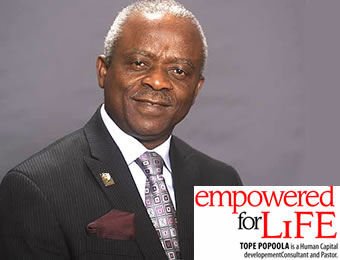On a recent trip to the United States, while I was flipping channels on cable TV, I stumbled on a program on CNBC channel. It is called “Shark Tank”. It is a program where people with innovative business ideas come before a panel of real potential investors to pitch their ideas with a view to attracting investment and equity funding. Each person seeking funding has a few seconds – usually about thirty – to present the idea and to get at least one of the four or five ‘Sharks” to decide to fund his idea and enter into a partnership. The panel then asks him various questions relating to the business idea. This is the point where the rubber meets the road. On that program, I saw what appeared to be very excellent ideas – as attested to by the “Sharks” themselves – literally thrown out of the window while others that appeared less promising were enthusiastically embraced by the investors and in many cases, they actually competed for its funding! It occurred to me that it is not always about razzmatazz or hype. It is about getting the customer to do something definite, not only to buy but to enjoy buying!
You must guide the customer to a decision. Never goad him into one because even if you succeed, he will turn round to loathe you eventually for foisting something on him that he was not convinced that he needed but was compelled to buy because he had to find a way of getting you off his back. Trust me, this would blind him totally to any value inherent in the product unless something fortuitous happens that convinces him otherwise. Then he may turn round to thank you for making him buy. But that proposition is often a long shot in the dark.
How do you guide the customer into a buying decision? Lay all the facts about your value proposition before him in a way that shows that his interests have not only been anticipated but amply taken care of! At this level, the focus is on him, not you. Your credentials and achievements only matter at this point if they will make you serve him better. So unless he expresses concerns in that area, never make it an issue. Believe me, when he needs that information, he will ask you! Never forget that the only question going on in the mind of a customer while you are pitching your value or service is “What is in it for me?” This is what is known as the WIIFM factor. So, communicate with the intention of creating an “Aha!” moment for him! The “aha” moment is that point where the customer can say, “Now I see what you are saying and it not only makes sense but it resonates with the gap I need to fill at this time.” At that point, a buying decision for the customer is seen by him as an investment which will bring him dividends rather than an expenditure!
Success in managing decisions is however predicated on managing emotions. As I said last week, the customer does not invest in your brand only because of what he sees. He invests because of what he feels! So, customers hardly buy a product that they cannot first connect with emotionally. The customer buys a product either because of his emotional connection with the person offering the value or with the product itself. In the same way that a sick person does not have to go to the hospital if he does not feel like, even though that is the proper thing to do, a customer does not have to buy anything even if it is very obvious that he needs it. An obvious need does not necessarily translate to an expedient buying decision. The customer’s emotions must connect first! Someone has defined emotion as energy in motion. I agree with him entirely. This is why our most important decisions flow in the direction of our deepest sentiments.
In customer management, profit must never be the primary consideration, or at least that motive should not be evident to the customer. Where customer management is effectively done, profit is the consequence. And the customer will gladly let you make that profit so that you can be further empowered to serve him!
The first key issue to take into consideration in succeeding at all the levels of customer management mentioned above is TRUST. Everyone, including the most hardened rogue, is looking for someone to trust. It is the only reason why even robbers keep their loot in banks! Trust helps to build confidence. If the customer can trust you, he has no problem with buying from you. The customer wants to invest in you first before he invests in your value proposition. Before he can trust you however, the customer must see that you care about him and are not just interested in dumping your goods on him. I always advise salesmen to seek to develop a relationship first before they sell. If the customer doesn’t buy you, he is not likely to buy your product! Remember the well-worn aphorism that no one cares how much you know until they know how much you care! In building the trust bridge, create a feedback mechanism and a fear-assuaging after-sales service that tells the customer that you have his back and that you care about his input in your business.
Moreover, you must demonstrate loyalty to the customer if you expect him to remain loyal to you. This is why airlines have Frequent Flyer programs as a way of rewarding those who choose to regularly fly with them! Let your customer know that beyond the immediate transaction, he has something good to look forward to from you! You cannot make your customer feel like a king if he cannot see the throne that you built for him!
One more thing. Never attempt to sell to anyone a product or service that negates his core values. You may be the hottest salesman in the cigarette industry. But unless you want to swim in stormy waters, steer clear of the Vatican!
If you can consistently swing these issues in your favour, you will not only have lifelong customers, you will raise a steady pool of customer evangelists!
Remember, the sky is not your limit, God is!






